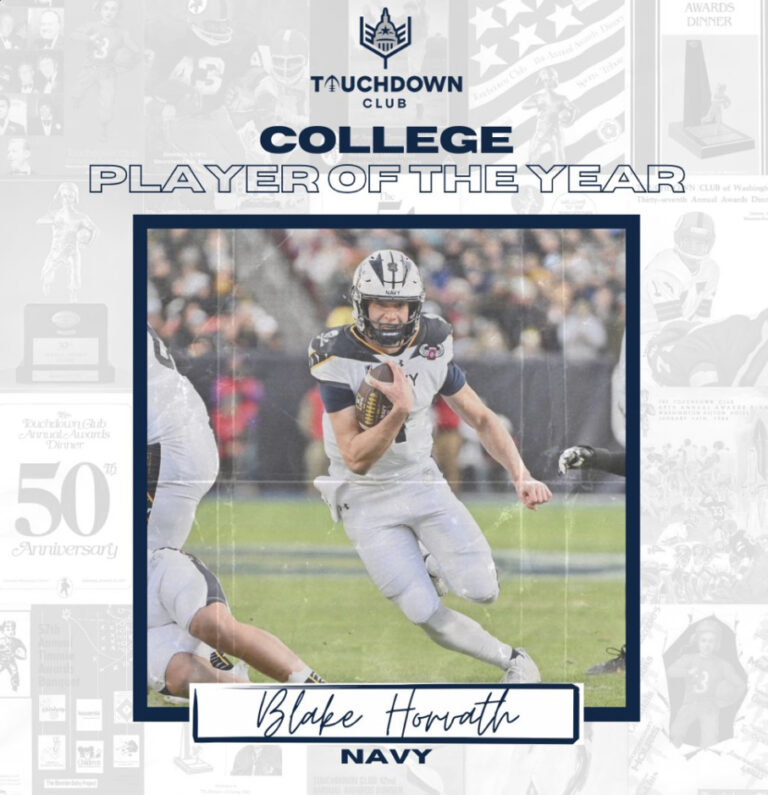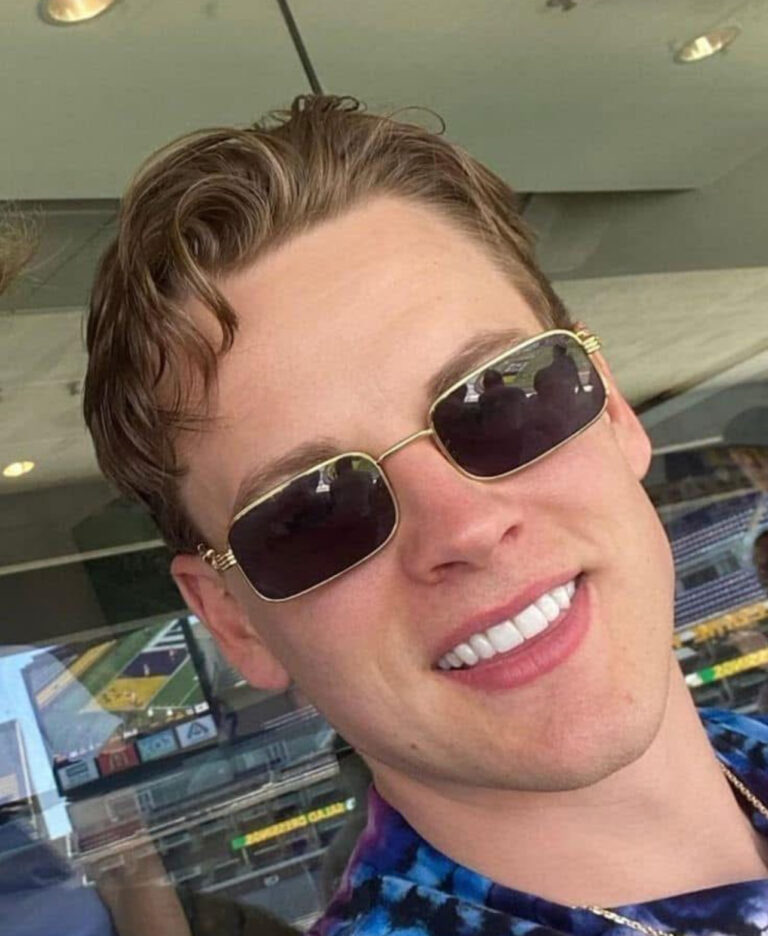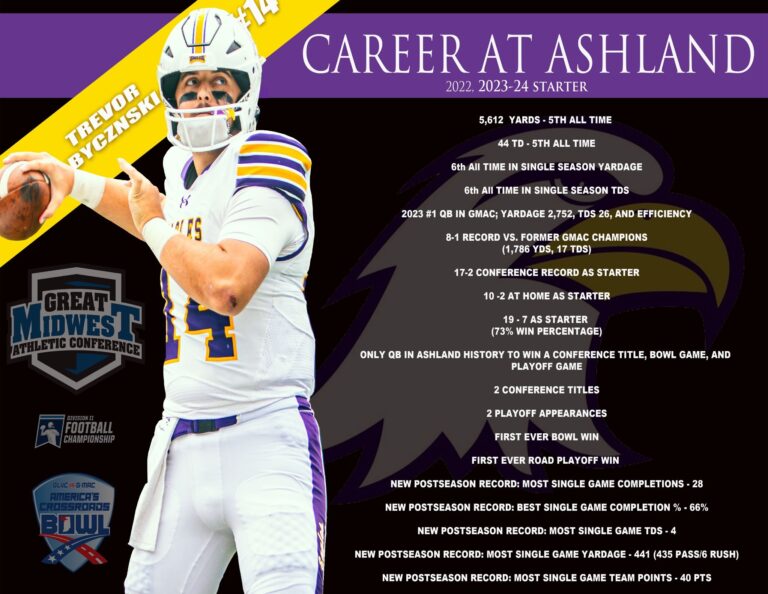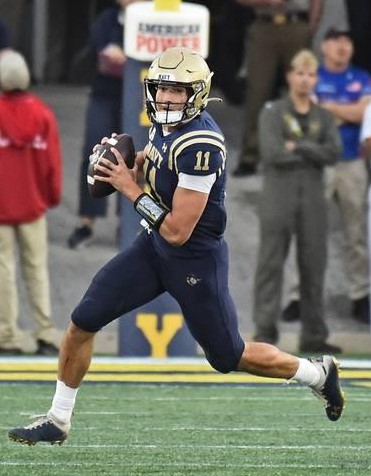
Here is my approach to Coaching the Zone for QBS, enjoy !!! Written in 2019.
“Push a Button and Make a Great Quarterback”                          Â
Ron “Coach Sink†Roesink 3/17/17 AFCA #30752
I would like to tell you, it is just that easy but as most who have tried and succeeded to some degree know, is impossible!  It takes an incredible amount of hard work, good if not excellent coaching, and a student with God given talent, desire, determination, intensity and most of all perseverance and a coach with a tremendous passion to see that young man succeed. Is it easy? No, but do-able!
Let’s get started with a few basic ideas that even one or two might help with your Quarterback development. Let me give you just enough background on what I do and where I derived my experience and who influenced my coaching, so that you will understand how I have arrived at these proven theories I am about to share with you. I spent a lot of time hanging with the late Joe Daniels (U of Pitt and Ohio State) QB coach and followed for a life time the incredible Tom Martinez (Tom Brady’s private QB coach from the age of 12 until he passed away about 3 years ago). Current Coaches that have been a great influence on my QB coaching are Shawn Watson the OC at the U Of Pittsburgh and famous for the development of Teddy Bridgewater of the Vikings (plus others) and recently the OC at Boston College, Scott Loeffler. I have coached for several major Universities their Elite QB camps and have coached for Pro Camps and directed Camps for NFL Players and for the past 11 years have only coached Quarterbacks and Receivers at all levels privately all over the US. That’s enough about me.
Just for starters, the QB position is like no other in sport for several reasons, as most of you know. So, let’s take just the physical development of the body first and let me share with you a few ideas that may help. One has to do with the upper body strength and conditioning. However, from my painful experience, I believe you cannot build traps and continue with accuracy and depth of ball if you do. It really detours the ability to reach for a proper throwing motion. I want my QBs to build strength with lots of reps and lighter weights and I really
prefer for them to use bands in their development. I insist they do 25 to 30 reps per day of a straight rod (a broom stick or a baseball bat will do) placing it on their chest with their hands placed over the bar so that their elbows are bent at a 90 degree angle.  Then take the bar and raise it straight up over their head and continuing until the bar rests on the nap of their neck (count to 7 slowly) and repeat.  Within a few weeks you will notice the ability for them to go stronger and deeper with their throws. Watch short video …..
While attending a basketball clinic several years ago I watched as the late highly successful Rick Majerus, former coach of Ball State, Utah, and St. Louis showed how his players developed unusual hand strength by doing what he called fingertip push-ups. I remember going to him afterwards and saying, “Man, what a great idea for QBs and WRs in footballâ€. He smiled and said you have no idea what it can do for hand strength and then related that he always lead the conference in rebounding and he believed it was the fingertip push-ups. I can tell you I have seen a huge difference in both the QBs maintaining control of the ball and the WRs making more difficult catches. Put your guys in a push-up position, ask them to get on their finger tips and have their chest and body 1 inch off the ground, stay there, and you start counting. All my players have to do these every day and if they do, they will be able to stay in place for 150 to 200 counts.  This will also help in throwing the ball and their ball control. See short video #2. Â
Footwork Is Everything
Now let’s get to the real meat of how to throw the ball with great accuracy, velocity, great depth and with a tight spiral that you can throw in a gale wind and not affect your ball. Their footwork is everything because the foundation is where it all starts. Not to oversimplify, but until your QB learns to take a proper one step, two step, 3 step, 5 step and 7 step drop, with his feet staying parallel to each other and in a straight line, is he really a QB?  Well, I don’t think so. I know this is elementary to a lot of you but if you could see the HS kids I watch and even some College guys that cannot come close to dropping in a straight line, I am not sure you would believe it.   I use a lot of drills working on one of the yard lines, having them straddle the line and work on their drops making each foot land so the arch of their foot is on the line.  Also I think it helps to have them continue across the field on that yard line and then return. It builds strength and speed and done properly avoids hip flexors that sometime bother QBs.  I also time their 3 and 5 step drops. You all know we play football 5 to 7 seconds at a time.  If it takes them 2.5 seconds to drop they have just used up (I say wasted) 35% of the play. If it takes them 1.5 to drop a 3 step drop they have used up 21% of the play and we are just then ready to do something. If you work on the speed of their drop by timing them make certain they must stay under control and not get their feet to far apart. The fastest QBs I have trained can make a 3 step drop in .41 to .59 seconds. Now, think how much longer we have to go over our reeds and prepare to throw the ball than someone in the 1.5 to 2.5 sec range. For a 5 step drop my best QBs are in the .89 to 1.15 range. I have what is known to my players as the “Sink Boxâ€, and at the beginning of working in it at times it is more frustration then they like, however when they master it they are amazed and so is everyone else that watches them work in it.   You can literally make a QB do everything he needs to do to perform on the highest level. It would take me too long in the article to describe it so I am attaching short video of a star QB who is now playing in California.  I have a multitude of drills that can be done in this box and I will share those at a later date.  See video here………….
QB preparation for Delivery
Through the years I have always felt that often a QB misses the mark on his throws because of the timing to load the ball and deliver it or because his feet are not aligned correctly.  I believe the feet must work in tandem parallel, but the back foot needs to be a “T†square to the spot you want to throw. I like the feet to be about 6 inches outside the shoulders (Not too far apart but not so close together that the QB cannot easily close (or hitch) using his back foot first, of course.) The danger in getting the feet too far apart is that it tends to make the QB bend in the middle and not be upright for the throwing motion. Also if they are too far apart it will slow them down because you have to make an additional move to stand UP. Keep the knees slightly bent as the QB works in the pocket however from the waist up he is ERECT, keeping his shoulders back and level and his chest out and the ball held in the QB position just above the chest line.  The ball should be secured with both hands even and parallel to the upper chest (Andrew Luck does a great job of this ball placement). Now, stay with me, let me describe a perfect load. As the QB loads his throw, the front hand releases away and allows the elbow to be a straight line pointing directly at the target.  This allows his shoulders and front elbow to be in a perfect line. Do not over-accentuate the rise of the front elbow to an uncomfortable position, rather relaxed but making the elbow in that direct line with the throw. Now, the ball hand goes directly to the load position which is right at the back shoulder with the arm bent slightly more than 90 degrees. Do not have an added motion such as an egg pattern on the way to the load point. It only increases the time it takes to load the ball and distorts where he ends up as a load point. As for the ball placement, there are a couple of different theories, one is pushing the ball back and turning the wrist so the ball is turned backwards.  I do not teach this movement and the reason I don’t it takes another move to turn it around when you start forward with the arm and usually makes the QB throw around the corner and delivers a wobbly ball. So, I am convinced that it is better to just reach and let the ball be placed naturally.  Some QBs turn the ball a little more and others don’t, and that is OK. I have my QBs work in front of a mirror and practice the load, going back and forth between the QB position at the chest and the ready to throw load point. I have them repeat 50 times a day and increase the speed as they go WITHOUT distorting their motion. It is imperative that a QB have the ability to load and throw in a split second. It is the difference in being good and being great.  Short video of HS player practicing his load…. If you have a QB struggling with throwing a ball that wobbles, try putting him on his right knee (left knee if left-handed), have him point his front shoulder (loading as described above) and throw the ball on a line about 10 yards. After about 20 to 25 throws, he will be able to throw a tight spiral if he is delivering the ball over the top. The reason this works is, as he keeps throwing, he starts loading at His comfortable position and corrects most flaws in his delivery. I will save the hand release for a later article as it is lengthy to cover. See photo…
When to load the ball is so important, NEVER TO EARLY, NEVER TO LATE, ALWAYS ON TIME, is our moto. It varies with what we are asking the feet to do.  For instance, if we are going to catch and release the ball on a one step throw, we need to catch the snap and as we catch with our hands go directly to our load point with our entire body in position to throw to that spot. I used to teach getting the laces as we go. Now I teach, who needs the laces? I have all QBs practice throwing with or without the laces because with some offenses that are now popular, we have to deliver the ball (sometimes it feels like) before we catch it. With the RPO systems we have to be so quick to get rid of the ball and if we are comfortable in throwing with our without the laces then we are faster than those who can’t. Picture of holding the ball………. If we are throwing in a two-step situation, we load just as we finish our first step. So as we close we are ready to throw the ball with velocity. If we are throwing from as 3 step drop (what we call 3 firm) then we must load
on step 2 and 3 so as we plant the back foot we can drive the ball immediately from that position. If we are throwing from a 3 and a close (hitch) we load as we put the back foot in the ground on our 3 step drop, so we can close as fast as we need to and deliver the ball accurately. Aaron Rodgers, career completion avg. 65.1% and Drew Brees, career completion avg. 66.6%, are masters of this. I believe accuracy is affected by the timing of the load as much as any other reason. Â
Proper Delivery of the Ball
This is the key to constantly improving your accuracy. In my workouts EVERYTHING is a competition, as I believe God made us with an innate ability to compete. The new generation given the opportunity wants to compete, let’s keep giving them the chance. So, even during warm up we keep track of how accurate we are. The short video displayed here will give you an idea of things you can do to compete while even working one QB.   We warm up a little different from the traditional way. I start with throwing a 30 yard ball to 4 or 5 receivers spread from hash to hash across the field giving the QB a target of pinkies together at the waist.  With trajectory the QB jogs straight at the WRs and must drop the ball to the receiver with a perfect spiral and making the ball turn over and drop into their hands without moving. If he fails to do so it is 5 pushups. Just to keep it interesting quite often I have the WRs rate each throw from 1 to 10.  It is fun.  Then we back them up in 5-yard increments and repeat, ending at the 45-yard line for the less talented or younger players and ending up at the 50-to-60-yard line for the more experienced. If the QB fails to turn his front shoulder on each throw you will have a disaster of a drill, so this is allowing us to stretch his core on every throw. Then repeat the exact same thing, only make the QB place his feet parallel (back foot in a “T†square
to each receiver), standing erect, and deliver the ball striding INTO his throw using ALL the principles I have shared with you already. He will be allowed to close (hitch) on throws over 45 yards. All of this is done in about 7 to 10 minutes. Then I bring the receivers up to 12 yards away from the QB (he being in the middle of the field) First, he plants his feet solid parallel and pointing straight ahead. He must turn his front shoulder, reach and deliver the ball over the top to each receiver’s hands. The receivers keep changing each target between each of the QB throws.  There are 5 targets the receivers give, 1. Up high to the right with thumbs together 2. Up high to the left with thumbs together, 3. Middle of the chest with thumbs together, 4. Outside the right thigh with pinkies together and 5. Outside the left thigh with pinkies together.  The QB MUST put the ball in the hands of the receivers on each throw and we keep track of his percentage. Example: 1 for 1, 1 for 2, 2 for 3 etc.  The top guys I have may go 29 for 30 or 30 for 30 during this warmup period. We continue on with turning to the back side making the QB throw face to the left and throwing by reaching all the way around, then a one step drop, two step drop, 3 step firm, 3 and a close, 5 and a close, and mix in multiple closes.  Our entire warm up is completed in about 20 minutes and we are ready for workouts. Watch video ……… The discussion of delivering the ball is taught with a multitude of different thought processes. So here is where many of u may disagree, and that’s Ok with me. I told you at the beginning of this article I have followed the Tom Martinez theory of throwing, and in my mind his number 1 student In Tom Brady is pretty good, so I am going to continue using just that.  We deliver the ball from the structure I have already mentioned earlier in the article. The feet parallel and stepping into our throw from the back heel in the ground and transferring our weight to the front foot with the front knee bent as the ball releases. Our hand and arm motion come straight over the top and our delivering hand ends up at our inside thigh of our throwing hand. I do not teach a motion coming across the body and ending up in the left pocket. Reason for that: 1. if you throw 250 balls in one hour and a half (which we do) you may have a bunch of kids with sore arms and we have none, 2. If we step out of our throw during our transfer we will end up with not a tight spiral or inaccuracy depending on how far we step, and we will definitely shorten our deep ball and take velocity away by making the arm the most important power in the throw.  By staying what I call closed up (or stepping directly at our throw) we keep the opening of our hips in co-ordination with our upper body giving us more velocity and distance and allow the arm and hand to be the director of the ball instead of the power. I like to allow the QB his option for placement of the front foot — some wanting to place the pinky at the throw and others the toe at the throw. The only problem with pointing the toe at the throw is if the QB starts doing that early he will lose velocity and depth of ball.  I cannot tell you how important the keeping of the shoulder on the throw is to the power in the throw both in velocity and depth of ball.  I have had at different times, with college QBs that want to throw the ball deeper, used one or 2 of these thought processes and added 10 yards to their ball within 15 or 20 minutes of a workout. It is eye opening to them and me to see how easy it is to add distance. One of my College QBs called me and said I am coming home next week and I need 4 sessions. I knew when he said he wanted 4 session he had a problem!  He had a new QB coach and he had changed a lot about his delivery and he told me he could only throw the ball 40 yards and he needed help on getting his long ball back. We went to work using the principles I have given you.  By the end of the week we had a 2 QB shoot out with another big time QB.  This young man was back in business, with his final 3 fades at 63 yards, 59 yards and 64 yards.Â
QB eyes and deception
If we train our QBs early to know that they are in a cat and mouse game with the members of the defense It becomes second nature to use the two keys that defensive players focus on about the opposing QBs. What are they? They are the front shoulder and the eyes to try and read where the QB is throwing. So, let’s take that theory and use it. Constantly during our workouts, and can be in yours, we keep the QBs eyes and front shoulder off the throw, and at the last split second let the eyes go to the throwing spot and they will take the feet and shoulder with them. By constantly working on this fact, you will develop the QBs peripheral vision and just like every other muscle in our body, make the eyes stronger and stronger. We use a couple of techniques to accomplish this, one of which is make them watch a coach that is placed at a strategic spot on the field as if he were a safety or linebacker and make him move them by following the QBs eyes and shoulder, then let the QBs eyes go to the throwing spot, complete the throw with speed and accuracy. Another is we have a second coach stand on the side of the field away from the purposed throw and put up so many fingers up on his hand and the QB have to yell out the number and then take his eyes to the throwing spot align his body and make the throw.  I believe if we do this regularly in practice we will, develop a QB with great deception and ability to react quicker and deliver the ball faster with more completions.Â
I want to close with my philosophy of why I love what I do.  First, I want you all to know it is not about me. It is about the kids and my passion in trying to make them as good as they can be. We do that by nurturing a whole Man, building the body, developing the mind, and encouraging the spiritual.  We close every work out with a statement of positive influence; one is “Know the truth, for the truth will set you freeâ€, another is “we are what we repeatedly do, excellence therefore, is not act but a habitâ€, and there are many more. All the kids memorize these, and my hope is they will become great citizens of our country playing our fabulous game of football and using their talents to make a difference in the lives of our next generation. “Coach Sinkâ€
Thanks for the opportunity to share and I would enjoy hearing from you guys so you can contact me at www.coachsink.com through my website. Hope all of my players read this along with the hundreds of coaches that visit this site. COACH SINK




